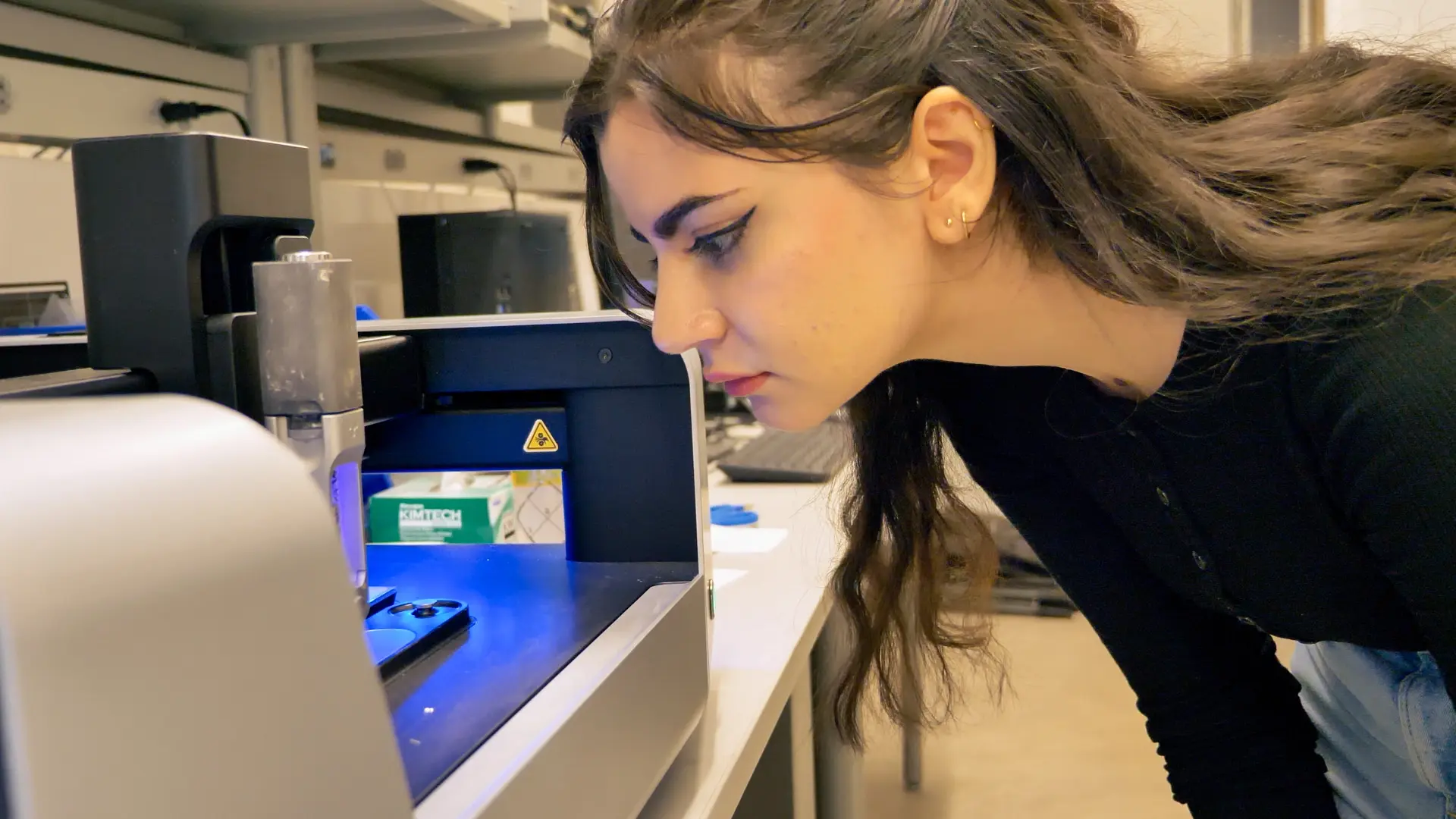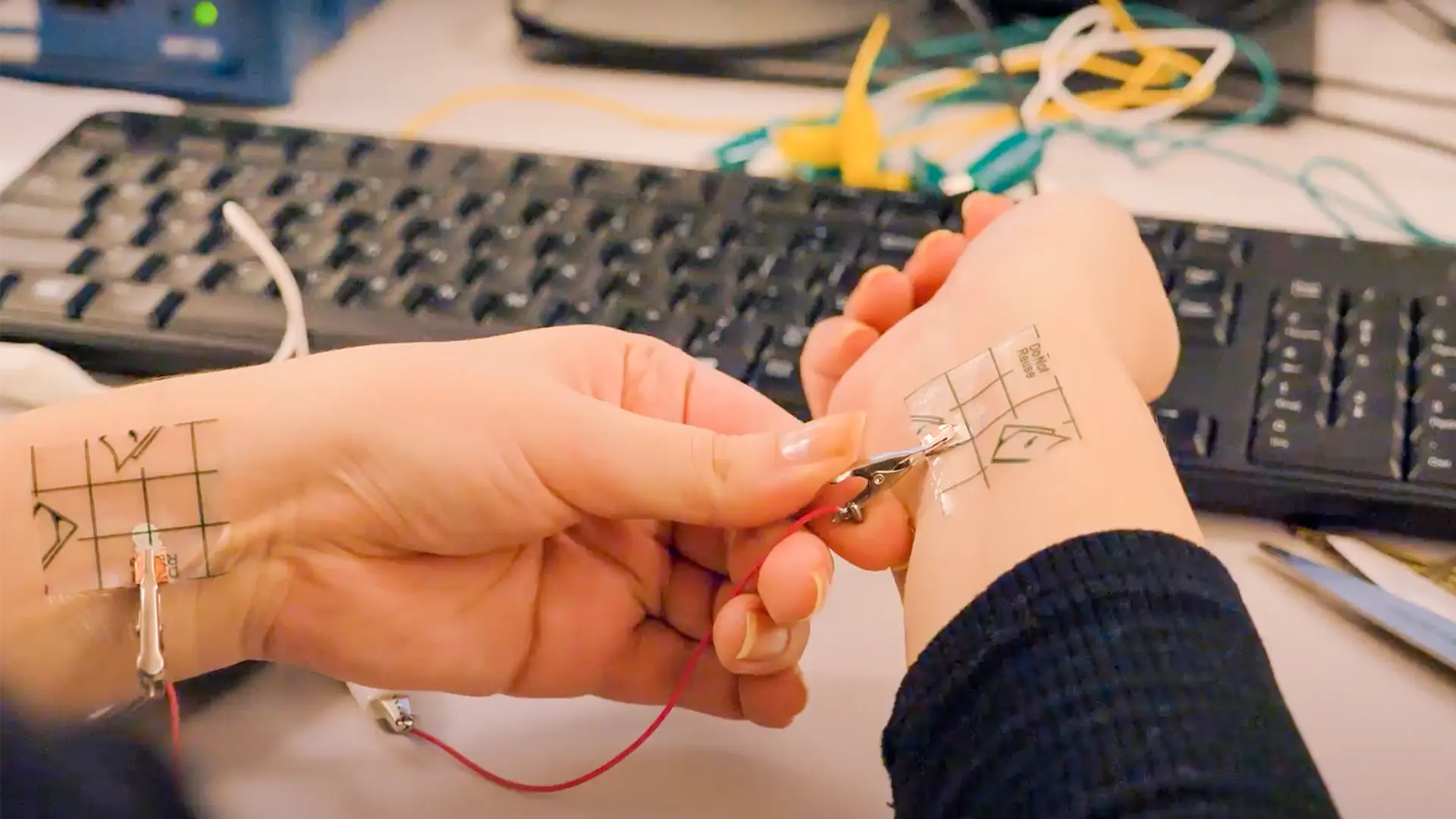Introduction to Direct Ink Writing (DIW) Printing Technology
There are many different printing technologies to choose from when it comes to printed electronics. Picking the wrong technology at the start of the project can cause significant upfront investments that you can’t get back, not to mention timeline extensions in order to make your design work with another production technology. We’ve already covered screen printing, inkjet printing, and gravure printing, and in this blog, we’re going to take a closer look at direct ink writing technology.
What is direct ink writing?
Direct ink writing (DIW) technology, also known as direct-write technology or robocasting, is an additive manufacturing process that patterns functional materials directly onto a substrate using a fine nozzle. Unlike inkjet or screen printing where a swath or complete pattern is printed all at once, direct-write printing requires the nozzle to be moved relative to the substrate to draw and fill in the entire pattern feature-by-feature [1]. Basically, the nozzle moves like a pencil over paper to leave the pattern on the substrate, one trace at a time.
Why choose direct ink writing
Rapid iteration and design flexibility


Direct ink writing is slower than high-throughput methods like screen printing, but it excels in low volume prototyping and applications with high customization, where other non-digital technologies like screen printing struggle.
Direct ink writing systems are flexible and can be configured to work with a wide range of materials that are accessible to screen printing while simultaneously allowing both design and material changes to be made on the fly. This is why some folks have started to refer to direct ink writing systems as “screenless screen printers”. This kind of flexibility allows designs and projects to progress without the tooling delays associated with making new screens for each iteration.
Seamless scale-up from prototype to production


A common hurdle designers face is that in order to bring a product to market the designer has to change materials to conform to the existing screen printing production infrastructure. The chosen material is often selected for its specific performance characteristics and generally cannot easily be swapped with another conductive ink or substrate without impacting the rest of the design.
These hurdles can be avoided with direct ink writing systems since the materials compatible with DIW are almost always screen printable, whether they are conductive, dielectric, or another functional ink. This means you can prototype rapidly with DIW and then transfer your validated design directly into existing high-throughput manufacturing lines without having to reformulate materials or redesign layouts.
Minimum material waste


Another advantage is that the DIW systems can deposit nano- and micro-sized materials in small amounts [1], exactly where needed. This means that no screen cleanup is involved and no material is wasted or contaminated after each use, allowing designers to test novel or limited-quantity materials while staying aligned with scalable manufacturing.
Feature resolution of DIW systems


There are several key aspects that determine the resolution of a direct ink writing system. These include nozzle size, pressure control, height control, and material properties, just to name a few.
By tuning these parameters, direct-write printing systems can generally produce features down to 100 µm with feature aspect ratios up to 1:1 with configurable print heights, but it is not uncommon for finer features to be produced. In the pursuit of higher resolution prints, both the nozzle and print height must be reduced to limit the amount of fluid that can be deposited. As a result, pressure and print height control become paramount to maintaining consistent flow rates and avoiding crashing the nozzle. In the event of a damaged nozzle, it can be quickly replaced with commonly available disposable dispensing tips.
Types of direct ink write dispensing
Time-pressure dispensing
This is a type of pneumatic direct-write dispensing that uses pressurized air on a reservoir of material to extrude that material through your nozzle. The amount of material that comes out of the nozzle is governed by the air pressure and the time under which you apply it.
Pros of time-pressure dispensing:
- It’s simple to build an air pressure dispenser system.
- It can be an affordable technology to work with.
- It has low cleaning requirements, as many of the components are disposable.
Cons of time-pressure dispensing:
- There’s a lag between initiating the pressure and actually dispensing, which can cause material oozing.
- The volume of material in the reservoir is a big factor in performance because as you dispense material, the pressure you need to apply to extrude more, changes. Basically, you’re going to need to adjust your settings on the fly, over the course of every print — and if you already have problems determining your flow rate, this is going to be a real challenge.
- You have no direct control over the amount of volume displaced, only the amount of pressure that you apply. This causes difficulty with the consistency of printing features because you can’t ascertain a true flow rate for your material without in-depth studies, which can take months.
- It’s really susceptible to viscosity variations, and because it uses air pulses to exert that pressure, it makes clogging a real possibility for things like solder paste.
Auger valve dispensing
This technology uses an auger that turns inside a cylinder that is fed material by a syringe, similar to the way that plastic extrusion screws on injection molding equipment works.
Pros of auger valve dispensing:
- It’s well suited for dispensing very small and precise amounts of material.
- It’s less sensitive to viscosity variations compared to time-pressure pneumatic dispensing.
Cons of auger valve dispensing:
- Particle size matters — large or irregular particles can cause clogging.
- Non-newtonian fluids (all conductive inks and solder paste are non-newtonian fluids) are thixotropic, which means that as you shear them, their viscosity drops and it takes time for the viscosity to recover. This can cause agglomeration of particles that leads to clogging.
Positive displacement dispensing
This catch-all category includes systems that use a motor-driven piston to extrude material through the nozzle — the technology that Voltera uses in its V-One and NOVA printers. Generally, if you’re pushing the plunger at one rate, your flow rate will be the same on the other side. Think about how a syringe would work.
Pros of positive displacement dispensing:
- It is conceptually more simple and more reliable as long as it’s applied appropriately.
- It doesn’t rely on pressurized air, which means the dispensed volume is more directly proportional and repeatable compared to time-pressure dispensing.
- Because it uses straight displacement and doesn’t rely on pressure build up to apply it, you don’t need to think about how that pressure will relate to the displacement of fluid, or how the pressure required to displace fluid will change as the volume in the cartridge changes.
- It has low cleaning requirements, as many of the components are disposable.
Cons of positive displacement dispensing:
- Conductive inks are thixotropic, which introduces variability in flow behavior. That’s why, taking this into account, we created NOVA, a positive-displacement, direct-ink-writing system that can reliably handle high-viscosity inks.
- It uses a fixed-volume cartridge, so there will be times where you will run out of material and you’ll have to reload your cartridge. This means downtime for material changeover.
- There’s also the possibility of trapped air in your fluid which is compressible and can alter your flow rate.
Piezo-actuated dispensing vs. DIW
Another technology that often comes up in printed electronics, piezo-actuated dispensing, is often compared to DIW because it offers great feature resolution. However, unlike DIW, piezo-actuated dispensing is not a contact printing technology.
Piezo-actuated dispensing uses a piezo jet valve, where the fluid is held between the piston and the nozzle and jetted at the surface from a set height. That piston is connected to an actuator which, when an electric charge is applied, oscillates up and down. This kinetic energy ejects the fluid onto your substrate.
Pros of piezo-actuated dispensing:
- It’s really fast. Because it doesn’t need to move in the Z-axis at all, there’s no height sensing and repositioning required. Those things typically only take fractions of seconds, but over the course of your print, they add up.
Cons of piezo-actuated dispensing:
- It doesn’t typically work with things like solder paste, or other materials with ultrafine metal particles in them because they need to evenly jet the material.
- It is costly. If your application requires high speed and a high degree of accuracy, then the piezo-actuated direct ink writing machine might be worth the investment.
- These systems require a lot of cleaning and maintenance to keep in tip-top shape.
Cost of DIW systems
As with any piece of equipment, there are costs associated with direct write systems. Because of the technologies involved, direct-write systems are more like laboratory inkjet systems in terms of cost than they are to screens, but with the ability to print high-viscosity screen printing pastes.
It’s important to evaluate both the short-term and long-term needs of a project before investing in equipment. Direct write technology in combination with screen printing is a powerful combination that can unlock the potential of printed electronics and additive manufacturing for a lot of innovative applications!
Conclusion
Direct ink writing offers a unique balance of precision, flexibility, and material compatibility. From its ability to prototype with screen-printable inks, to its support for nano- and micro-scale materials in small quantities, DIW enables faster iteration without the overhead of tooling.
Want to learn more about direct ink writing? Check out these resources:
- Blog: What Are Precision Fluid Dispensing Systems?
- Blog: Inkjet vs. Direct Ink Writing (DIW) for Printed Electronics
- Blog: CNC Milling vs Direct Ink Writing (DIW) for PCBs — How Do They Stack up?
Are you looking to invest in a DIW system? We are happy to help you find the right solution. Book a meeting to speak with one of our technical representatives.
References
[1] Soukaina Lamnini, Elsayed, H., Yazid Lakhdar, Baino, F., Smeacetto, F., & Bernardo, E. (2022). Robocasting of advanced ceramics: ink optimization and protocol to predict the printing parameters - A review. Heliyon, 8(9), e10651–e10651. https://doi.org/10.1016/j.heliyon.2022.e10651.

Check out our Customer Stories
Take a closer look at what our customers are doing in the industry.
